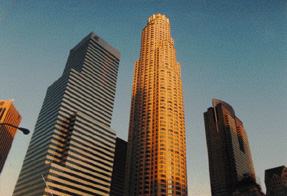 |
Discovering the Vernacular Landscape by J.B. Jackson is a collection of essays that praises equally the common as well as the structured aspects of the American landscape. All landscapes, according to Jackson, are the results of a community creating spaces in the environment in which to live, work and interact. Two basic human traits determine what kind of landscape is created. One trait values the concept of shared interest. The landscape is designed, establishing an overall order reflecting the community's world view. The other trait respects man's place as an "inhabitant of the natural world." Man adapts over time, developing traditions of building in harmony with nature. For Jackson, the designed or "political" space is often set against a backdrop of the "vernacular" or inhabited landscape, though each varies in degree in every society. Jackson's point is to look at the landscape as the result of their interaction, finding insight into the societies that created them.
In the American landscape, the political order is made visible in our boundaries, public spaces and road network. All express a particular vision of human order on the natural world. Jackson sees boundaries not as the limits of a community's territory, but as buffers to protect the unity and order within. Accordingly, the singular spaces most symbolic of the community group, the plaza, the county courthouse, or the village church, are found at the center of town, protected and contained. The
uniform Jeffersonian road grid and its modern counterpart, the interstate highway, are also strongly symbolic of American political will. They tame the vast wilderness into a comprehensible entity, expressive of our values of democracy, freedom and the power of the individual to create a nation.
Jackson discusses how American houses represent most clearly the other landscape, the "inhabited" or vernacular landscape. America's abundant forests are the primary reason our early domestic architecture was primarily built of wood. Combined with the lack of house builders, masonry quarries and other hardships of colonial life, most settlers built their homes with their own hands, making do with what skills and materials they had. The brick manor house of the European gentry expressed ideas of permanence and history. In contrast, Americans houses were quickly built out of simple wood construction. They were considered a temporary place of dwelling until better opportunities were found. The house as a commodity, easily traded or abandoned, enabled Americans to seek "freedom from emotional ties to the environment, from communal responsibility, and most of all, the freedom to move on to somewhere else."
The contrast between timelessness and impermanence is typically American. Main Street's courthouse and town square finds its antithesis at the edge of town in the honky-tonk strip development. The classic American public park, based on an English model where one could commune with nature, is not far away from the city's unstructured playgrounds, boardwalks, and county fairs. Public buildings and monuments built of masonry, concrete, and steel are as much American architectural tradition as prefabricated buildings and mobile homes. Our society creates structures that require nation-scale efforts, ordering our landscape in limitless ways. We also casually inhabit the land, where meaning in the landscape is derived from our experiences and people within it.
The modern American landscape is undergoing profound change. Jackson notes that the increased speed and mobility in which we travel are the result not having fewer ties to the land. The enthusiasm we have for traditional planning in our cities, however, inspires us to make artfully designed spaces with meaning and purpose. Given these influences, the landscape is not just a space found in nature, but a record of our history. For Jackson, it is a sure expression of who we are. The freeways, recreation areas, shopping centers and other changes in the American landscape are becoming "less detailed, less monumental", but rather "more spacious and unpredictable". This indicates not change in politics, form or topography, but the gathering of people making new settings for their communities. Jackson feels all Americans should have an "intelligent affection for the country as it is" for it is they, through their actions, create it.
|